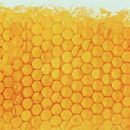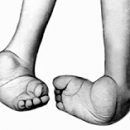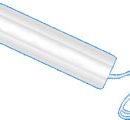The mechanism of formation and causes of the cyst of the Baker of the knee joint. Symptoms and complications of herniated pate. Surgical operations to remove the cyst of the Baker of the knee joint.
Content
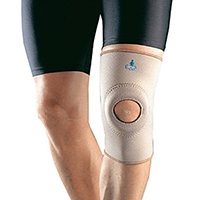
The cyst of the knee biker is a new formation on the back of the knee joint in the form of an elastic bag filled with articular liquid. Outwardly resembles herriation, develops as a result of knee injury or against some chronic diseases. Dimensions of cysts can vary from 2 mm to 10 cm. In the manifestation of clinical symptoms, timely treatment is required, since having achieved large sizes, the tumor may cause serious complications.
Cysta Baker of the knee joint (traded hernia, herniated pneaking) — This is a benign, filled with articular liquid tumor education arising between the bones of the knee joint. Noticeably stands out on the leg in the dismissed position. Upon reaching a large large sizes, the development of chronic knee joint edema is possible.
Baker's cyst development
The development of pathology is explained by the characteristics of the structure of the knee joint. Between the tendons of the calf and semi-sephel muscles there is a cross-free bag. As a result of injuries, some diseases and excessive physical exertion in the joint, an inflammatory process with accumulation in the intersrugous bag of the joint liquid and the formation of convexity on the rear surface of the joint.
The causes of the cyst of the Baker of the knee joint
The most frequent causes of the occurrence of pathology are leg injuries. The development of cysts contribute to damage to the cartilage joints, structural changes of meniscovers and the knee hole dislocation. Such a tumor can be a secondary phenomenon and develop against the background of various pathological changes in the knee. Various diseases are capable of provoking the emergence of the neoplasm: rheumatoid arthritis, developing osteoarthritis, chronic synovit (inflammation of the knee joint) and some others.
The disease is predominantly subject to elderly and people whose professional activities are associated with a large load on the feet. In particular, the big risk of disease exists in athletes.
Clinical picture of the disease
Sometimes the disease can proceed asymptomaticly, but in most cases it is accompanied by swelling and feeling of discomfort in the knee. Difficulties may occur when driving and feeling pain and pressure in the back of the knee. With a large size of the Baker's cyst, rounded swelling under the knee is formed, the knee mobility is sharply reduced and an acute pain occurs, which gives the skin when moving weight to the sore leg.
Than dangerous kista knee joint
In the development of the disease, the cyst of the Baker and the appearance of bruises on the inside of the ankle is possible. The tumor of significant sizes can cause squeezing in the populated region of blood vessels and lead to edema and development of varicose veins on the legs. The disease can also be a provoking factor in the occurrence of thrombosis and thrombophlebitis of deep veins of the shin, followed by thromboembolia — The tomb of the thrombus from the walls of veins and migration on blood flow.
Diagnosis and treatment of cysts
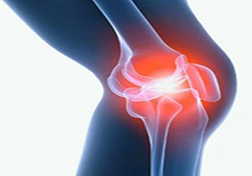
The diagnostic event begins with a patient survey. After familiarization with complaints, the doctor starts to inspect the knee joint and checking the amplitude of the movement of the foot. To clarify the diagnosis, a number of tests and specific procedures are appointed: magnetic resonance imaging, ultrasound, computed tomography and artwork (X-ray photograph). Diaphanoscopy also applies — The study in which through the cyst is passed the bright light in order to verify the presence or absence of fluid in the cavity of pathological education. If the development of the tumor is accompanied by an increase in body temperature, there is a risk of a neoplasm transition to a malignant state. Blood test is taken to clarify the diagnosis.
Treatment of the Cysts of the Pathdled Justav of Baker
Sometimes the cyst does not require specific treatment and can solve themselves for several years independently. But in the event of swelling and painful sensations, you should consult a doctor. Most doctors converge that with progressive growth of tumors, drug treatment methods are not effective. Medical preparations are usually prescribed after surgery. In preparation for operation, anti-inflammatory non-steroidal drugs can be assigned to remove pain and inflammatory process. For therapeutic treatment, tablets, compresses, physiotics and medicinal blocks are applied. But if you don't remove the cyst, it usually leads to a relapse after a while. The removal of the cyst of the Baker of the knee joint is carried out under local anesthesia. In total, the operation lasts about half an hour, after 7-10 days the seams are removed, and the patient is preparing for an extract from the hospital.

